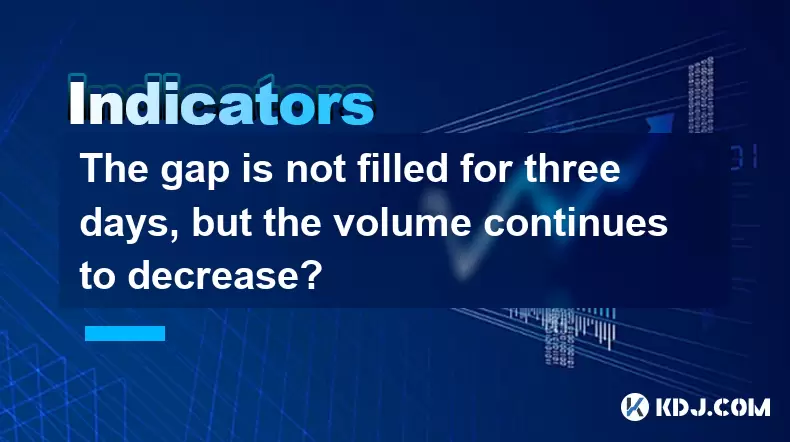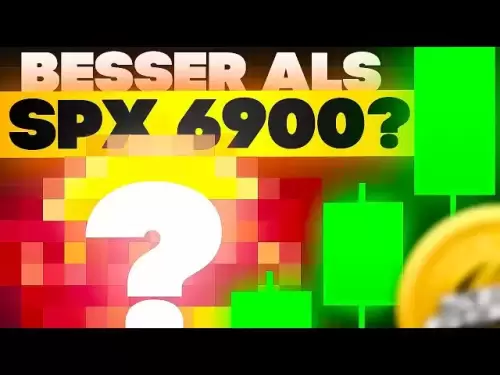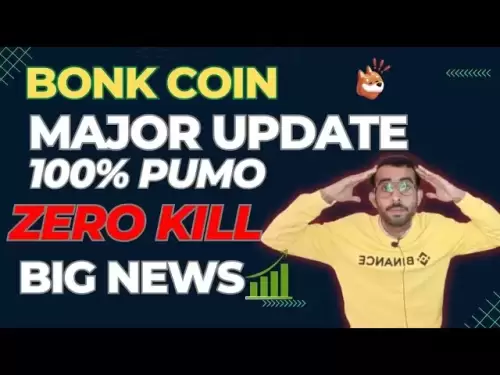-
 Bitcoin
Bitcoin $108,848.6733
0.48% -
 Ethereum
Ethereum $2,650.4108
3.28% -
 Tether USDt
Tether USDt $1.0000
0.00% -
 XRP
XRP $2.3770
4.09% -
 BNB
BNB $662.7961
0.67% -
 Solana
Solana $154.0288
2.41% -
 USDC
USDC $0.9999
-0.01% -
 TRON
TRON $0.2877
0.44% -
 Dogecoin
Dogecoin $0.1728
2.01% -
 Cardano
Cardano $0.6087
4.71% -
 Hyperliquid
Hyperliquid $39.0653
3.31% -
 Sui
Sui $2.9549
2.70% -
 Bitcoin Cash
Bitcoin Cash $506.5404
0.68% -
 Chainlink
Chainlink $13.9918
3.85% -
 Stellar
Stellar $0.2926
15.31% -
 UNUS SED LEO
UNUS SED LEO $9.0547
-0.25% -
 Avalanche
Avalanche $18.5380
2.95% -
 Hedera
Hedera $0.1687
5.02% -
 Shiba Inu
Shiba Inu $0.0...01203
1.93% -
 Toncoin
Toncoin $2.8229
2.41% -
 Litecoin
Litecoin $88.3562
2.27% -
 Monero
Monero $318.5282
1.46% -
 Polkadot
Polkadot $3.5233
4.53% -
 Dai
Dai $1.0001
0.00% -
 Ethena USDe
Ethena USDe $1.0009
0.06% -
 Uniswap
Uniswap $8.1560
8.38% -
 Bitget Token
Bitget Token $4.3553
1.56% -
 Aave
Aave $297.6786
4.28% -
 Pepe
Pepe $0.0...01023
2.74% -
 Pi
Pi $0.4650
1.98%
The gap is not filled for three days, but the volume continues to decrease?
2025/06/30 00:35

Understanding Gaps in Cryptocurrency Trading
In the world of cryptocurrency, gaps refer to price discontinuities between trading periods. These occur when the price of a digital asset opens significantly higher or lower than its previous closing price, with no trading activity occurring in between. Gaps are common in crypto markets due to their 24/7 nature, but they often appear more pronounced during major news events, regulatory changes, or sudden market sentiment shifts.
Gap filling is a widely discussed phenomenon where the price eventually returns to the level of the gap, effectively "closing" it. However, there are instances where the gap remains unfilled for several days, even as other indicators like volume behave unusually. This situation raises concerns among traders and investors alike.
Why a Gap Might Not Be Filled Within Three Days
When a gap persists without being filled within three days, it could signal a shift in market sentiment or long-term positioning by institutional players. Unlike traditional markets, crypto markets operate continuously, so persistent gaps often reflect strong conviction in the new price level.
Some possible reasons include:
- Strong support levels forming above or below the gap, preventing price from returning.
- Major whale accumulation or distribution patterns that anchor the price away from the original gap zone.
- Market uncertainty or consolidation phases, where traders hesitate to push prices back toward the gap area.
This behavior can be particularly confusing if volume continues to decline during this period, suggesting waning interest despite the unresolved gap.
Interpreting Declining Volume Amidst an Unfilled Gap
Volume is a key metric in technical analysis, especially in volatile crypto markets. When volume consistently declines while a gap remains unfilled, it may indicate a lack of aggressive buying or selling pressure necessary to close the gap.
Here’s what declining volume might imply:
- Traders are waiting for confirmation before entering positions near the gap zone.
- The gap has become irrelevant in the current context, with new support/resistance levels established.
- Smart money has already positioned itself, leaving retail traders inactive and causing thin order books.
Analyzing candlestick patterns and order book depth around the gap zone becomes crucial in such scenarios.
Technical Analysis Around Persistent Gaps and Low Volume
To assess whether the gap will eventually be filled, traders should closely examine price action near the gap area, moving averages, and key support/resistance zones.
Tools and indicators that help include:
- Order Book Visualization: Shows whether large buy or sell walls exist near the gap zone.
- Relative Strength Index (RSI): Helps determine overbought or oversold conditions relative to the gap.
- Volume Profile: Reveals where most trading activity occurred before and after the gap formation.
If volume remains low across multiple exchanges, it suggests that market participants are not actively engaging with the gap zone, which may delay or negate a fill altogether.
Practical Steps to Monitor and Respond to the Situation
For active traders and investors, understanding how to react when a gap isn’t filled and volume drops is essential. Here's a step-by-step guide:
- Mark the exact price range of the gap on your charting platform using horizontal lines or annotations.
- Set up alerts for when the price approaches the gap zone, either from above or below.
- Monitor on-chain metrics like exchange inflows/outflows and large wallet movements.
- Observe time-based candles versus volume-based candles to see if price movement is genuine or artificial.
- Avoid placing limit orders directly at the gap zone unless you have a high conviction strategy backed by historical data.
By following these steps, traders can avoid emotional decision-making and maintain a disciplined approach when dealing with unfilled gaps and low volume environments.
Frequently Asked Questions (FAQ)
Q1: Can gaps in crypto markets ever get permanently unfilled?
Yes, gaps can remain unfilled indefinitely, especially if new fundamental or macro developments justify the price move, making the original gap area obsolete.
Q2: How do I differentiate between a meaningful gap and noise?
Focus on gaps accompanied by significant volume spikes or breaking through key technical levels, as these tend to carry more weight than minor overnight moves.
Q3: Should I place stop-loss orders near unfilled gaps?
It depends on your strategy. Some traders use gaps as dynamic support/resistance zones for stop placement, while others avoid them due to potential volatility and slippage risks.
Q4: Do all cryptocurrencies exhibit gaps similarly?
No. High-cap coins like Bitcoin and Ethereum tend to show cleaner gap behavior, while smaller altcoins may experience frequent micro-gaps due to erratic liquidity and pump-and-dump tendencies.
부인 성명:info@kdj.com
제공된 정보는 거래 조언이 아닙니다. kdj.com은 이 기사에 제공된 정보를 기반으로 이루어진 투자에 대해 어떠한 책임도 지지 않습니다. 암호화폐는 변동성이 매우 높으므로 철저한 조사 후 신중하게 투자하는 것이 좋습니다!
본 웹사이트에 사용된 내용이 귀하의 저작권을 침해한다고 판단되는 경우, 즉시 당사(info@kdj.com)로 연락주시면 즉시 삭제하도록 하겠습니다.
- Nexbridge, Nexplace 및 Bitcoin Ecosystem : 새로운 금융 개척지 구축
- 2025-07-09 23:10:13
- MEXC LaunchPad & Pump Token : 40% 할인을 받습니까?
- 2025-07-09 22:50:12
- 무역 시스템 혁명 : XDC 및 팩스 종료가 금융을 재구성하는 방법
- 2025-07-09 23:10:13
- Ripple, Clarity Act 및 XRP 사례 : 암호화 규제에 대한 뉴욕 분
- 2025-07-09 23:50:12
- Rs 50 코인이 없습니까? 델리 HC는 왜 인도가 지폐를 선호하는지 듣습니다
- 2025-07-09 23:15:11
- Rs 50 코인이 없습니까? 델리 HC는 왜 지폐가 최고를 지배하는지 들었습니다
- 2025-07-09 23:50:12
관련 지식

How to trade Dogecoin based on funding rates and open interest
2025-07-07 02:49:34
<h3>Understanding Funding Rates in Dogecoin Trading</h3><p>Funding rates are periodic payments made to either long or short traders ...

What is the 'God Mode' indicator for Dogecoin
2025-07-07 16:42:48
<h3>Understanding the 'God Mode' Indicator</h3><p>The 'God Mode' indicator is a term that has emerged within cryptocurrency trading ...

Using Gann Fans on the Dogecoin price chart
2025-07-07 21:43:10
<h3>Understanding Gann Fans and Their Relevance in Cryptocurrency Trading</h3><p>Gann Fans are a technical analysis tool developed b...

How to spot manipulation on the Dogecoin chart
2025-07-06 12:35:49
<h3>Understanding the Basics of Chart Manipulation</h3><p>Chart manipulation in the cryptocurrency space, particularly with Dogecoin...

Dogecoin market structure break explained
2025-07-07 02:51:32
<h3>Understanding the Dogecoin Market Structure</h3><p>Dogecoin, initially created as a meme-based cryptocurrency, has evolved into ...

How to backtest a Dogecoin moving average strategy
2025-07-08 04:50:05
<h3>What is a Moving Average Strategy in Cryptocurrency Trading?</h3><p>A moving average strategy is one of the most commonly used t...

How to trade Dogecoin based on funding rates and open interest
2025-07-07 02:49:34
<h3>Understanding Funding Rates in Dogecoin Trading</h3><p>Funding rates are periodic payments made to either long or short traders ...

What is the 'God Mode' indicator for Dogecoin
2025-07-07 16:42:48
<h3>Understanding the 'God Mode' Indicator</h3><p>The 'God Mode' indicator is a term that has emerged within cryptocurrency trading ...

Using Gann Fans on the Dogecoin price chart
2025-07-07 21:43:10
<h3>Understanding Gann Fans and Their Relevance in Cryptocurrency Trading</h3><p>Gann Fans are a technical analysis tool developed b...

How to spot manipulation on the Dogecoin chart
2025-07-06 12:35:49
<h3>Understanding the Basics of Chart Manipulation</h3><p>Chart manipulation in the cryptocurrency space, particularly with Dogecoin...

Dogecoin market structure break explained
2025-07-07 02:51:32
<h3>Understanding the Dogecoin Market Structure</h3><p>Dogecoin, initially created as a meme-based cryptocurrency, has evolved into ...

How to backtest a Dogecoin moving average strategy
2025-07-08 04:50:05
<h3>What is a Moving Average Strategy in Cryptocurrency Trading?</h3><p>A moving average strategy is one of the most commonly used t...
모든 기사 보기

























































































